Abstract
Studies of the efficacy, in terms of burned wound healing, of a mixture of Ethyl Linoleate (ethyl 9-12 (cis, cis) octadecadienoate) with alpha-1-histidine, alpha-tocopherol, and TBHQ (hELate) was undertaken in 12 swine. The species was selected so as to study an animal with skin anatomy similar to the human. Statistically significantly greater healing occurred in 730 C/7sec contact burns (20% BSA) treated with hELate than in untreated burns in pigs. Further, there was no contracture noted in the hELate treated lesions, while marked contracture occurred in the untreated burns. Additionally, we noted that there was a proportional increase in weight gain amongst swine studied as their burn lesions epithelialized. In order to evaluate the compatibility of hELate with selected, currently-used topical antibacterial agents, 154 rabbits with 20% 730 C/7 sec contact burns were studied. The lipid was applied (0.01 ml/cm2 burn) at 1 hour postburning; the topical agent was applied at 2 hours post-burn and every 24-hours. All animals were washed once daily. hELate was applied only once. We found no statistical difference in the number of subjects healed or in the mortality between animals treated with hELate alone and those treated with the agent plus Gentamycin cream, Neosporin cream, and silver sulfadiazine 1% in Unibase USP (compounded at Medical College of Georgia specifically and only for this study.) We suggest that Ethyl Linoleate agent (hELate) may be used safely in combination with selected antibacterial substances. Further, these selected combinations seem to be non-toxic and appear to allow the calorie-saving and healing effects of the lipid to proceed unimpeded.
Full text
PDF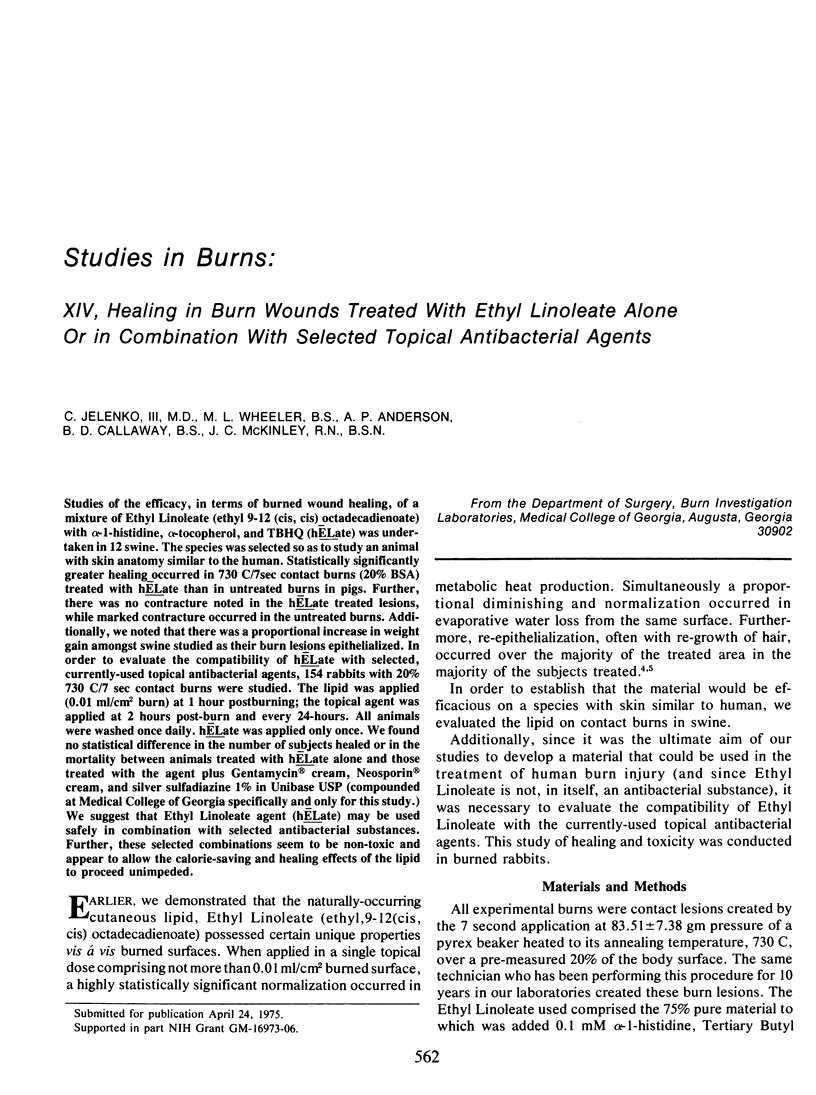
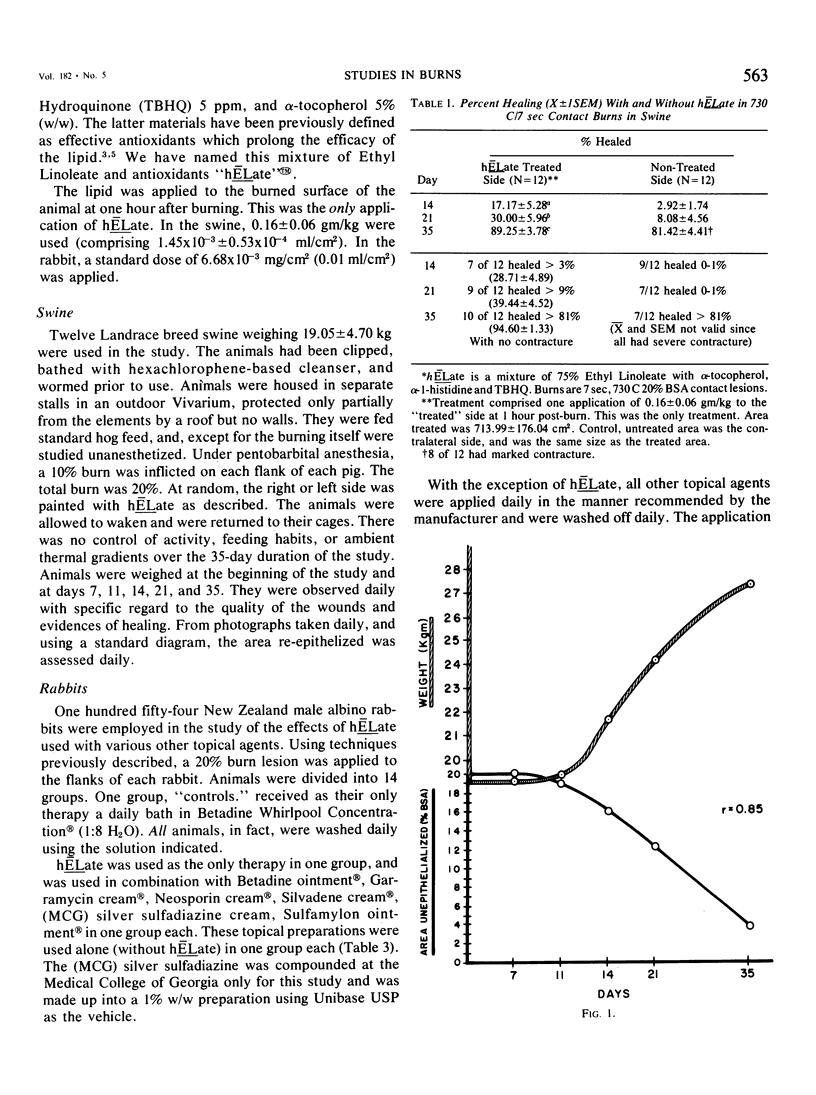
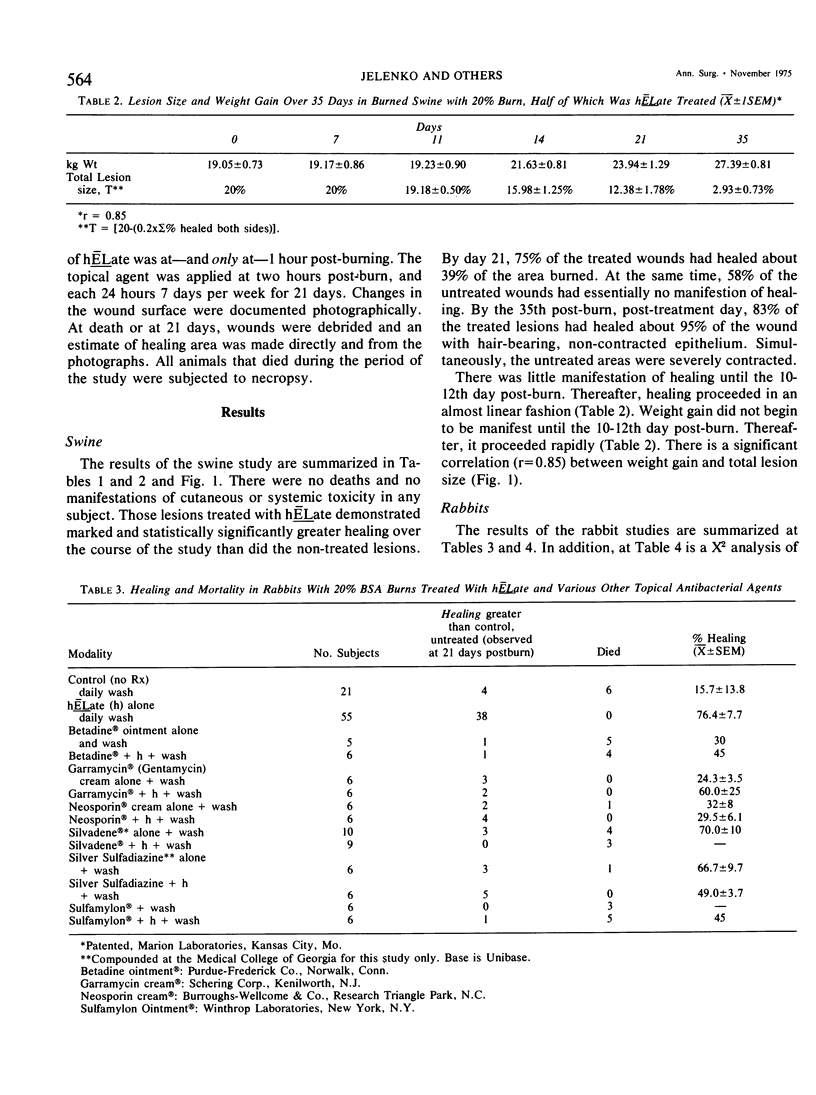
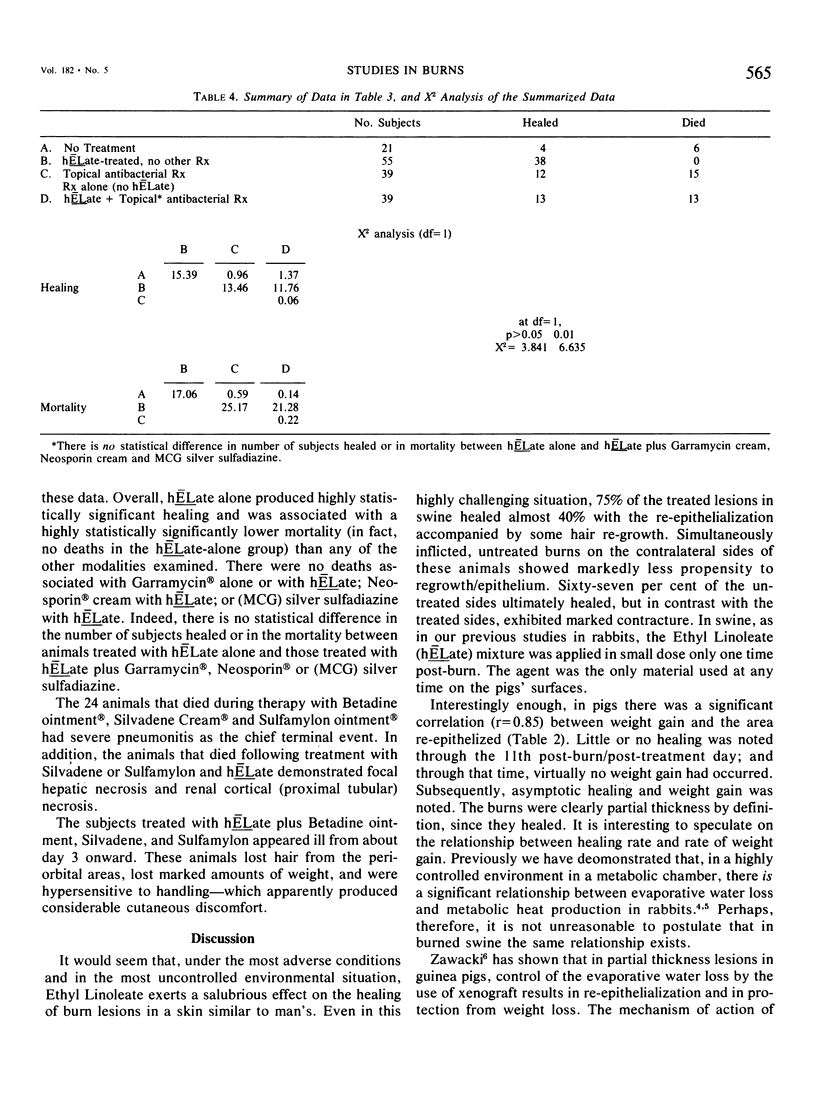
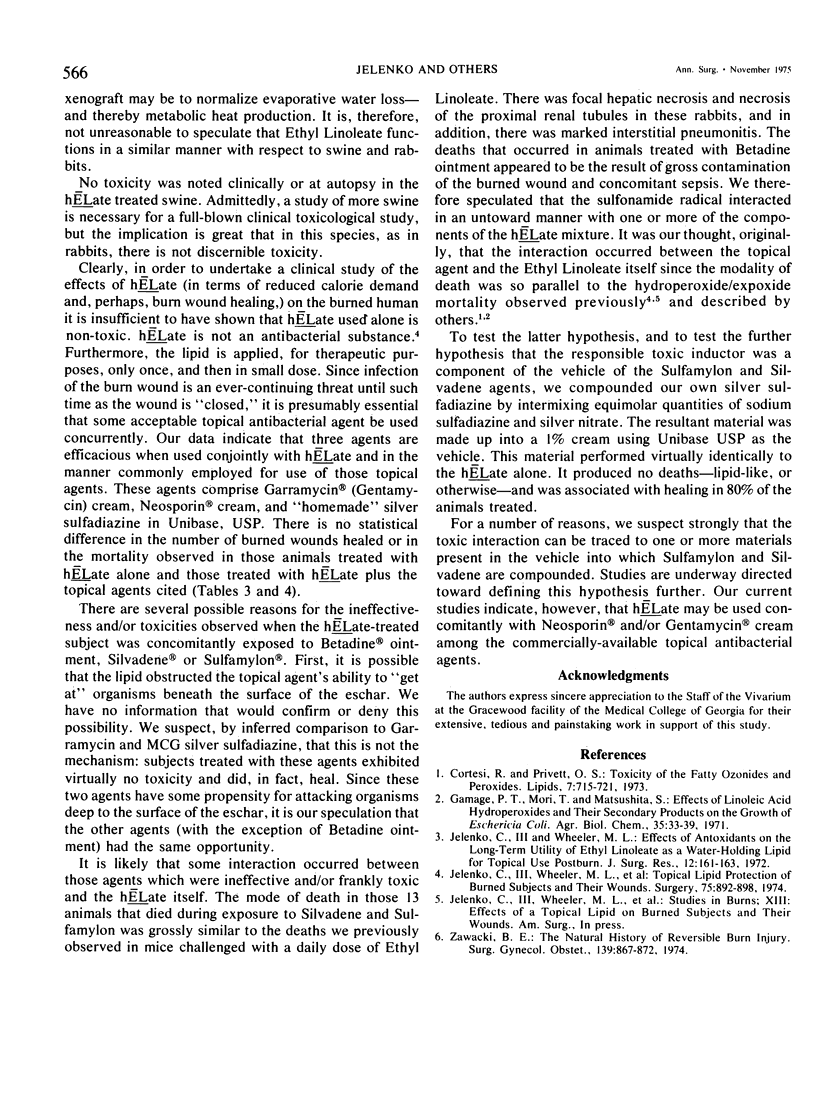
Selected References
These references are in PubMed. This may not be the complete list of references from this article.
- Cortesi R., Privett O. S. Toxicity of fatty ozonides and peroxides. Lipids. 1972 Nov;7(11):715–721. doi: 10.1007/BF02533120. [DOI] [PubMed] [Google Scholar]
- Jelenko C., 3rd, Wheeler M. L., Anderson A. P., Callaway D., Scott R. A., Jr Topical lipid protection of burned subjects and their wounds. Surgery. 1974 Jun;75(6):892–899. [PubMed] [Google Scholar]
- Jelenko C., 3rd, Wheeler M. L. Effects of antoxidants on the long-term utility of ethyl linoleate as a water-holding lipid for topical use postburn. J Surg Res. 1972 Mar;12(3):161–163. doi: 10.1016/0022-4804(72)90101-1. [DOI] [PubMed] [Google Scholar]
- Zawacki B. E. The natural history of reversible burn injury. Surg Gynecol Obstet. 1974 Dec;139(6):867–872. [PubMed] [Google Scholar]


